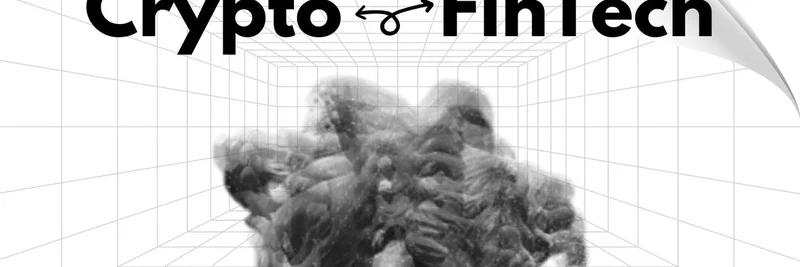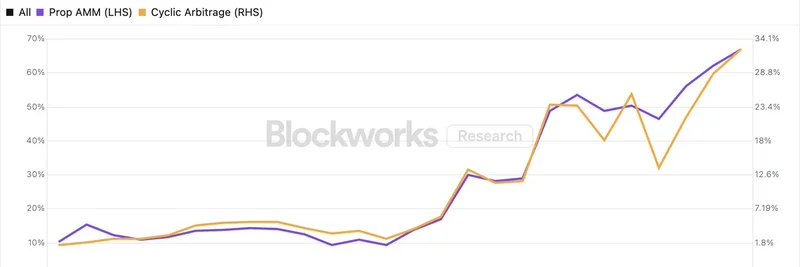If you've been keeping an eye on the blockchain space, you've probably noticed how the lines between cryptocurrency and traditional financial technology are blurring. A recent thread from @Defi0xJeff on X captures this shift perfectly, highlighting how crypto is morphing into FinTech and vice versa. We're talking about a new era where payment rails, data systems, and infrastructure come together to form an open, programmable, and smart financial ecosystem. Let's unpack this, drawing from the thread and the latest trends in 2025.
Why the Convergence is Happening Now
The fusion of crypto and FinTech isn't just hype—it's driven by real-world needs for faster, more inclusive, and efficient financial systems. As Defi0xJeff points out, this is all about creating a "new financial operating system" that's accessible to everyone, from blockchain enthusiasts to everyday users.
A prime example is the "Grab playbook." Grab, the Southeast Asian superapp often compared to Uber meets payments, started as a ride-hailing service but expanded into a full-fledged FinTech powerhouse. They built their empire by integrating financial services like digital wallets, loans, and insurance directly into their app, serving unbanked populations across the region. Now, in 2025, Grab has doubled down on crypto integration. Users can top up their GrabPay wallets with cryptocurrencies like Bitcoin and Ether through partnerships with licensed providers GrabPay adds crypto. This allows seamless conversions to fiat for everyday spending, bridging the gap between volatile crypto assets and stable financial tools.
What makes Grab's approach a playbook? It's about starting with user pain points—like lack of banking access—and layering on tech solutions. For blockchain practitioners, this means meme tokens and DeFi projects can learn from Grab by embedding payment features that make crypto usable in real life, reducing friction and boosting adoption. Trends show that by 2025, embedded finance and crypto integration are scaling rapidly, with institutional interest in blockchain surging Future of FinTech trends.
What EtherFi and Stripe Are Doing Right
Defi0xJeff spotlights EtherFi and Stripe as frontrunners in this convergence, and for good reason. These platforms are nailing the balance between innovation and usability.
Let's start with EtherFi, a leading Ethereum liquid restaking protocol. In simple terms, restaking lets you stake your ETH to secure the network while earning yields, but EtherFi takes it further by keeping your assets liquid—you get eETH tokens that you can trade or use in DeFi without locking up your capital. What they're doing right? Prioritizing non-custodial staking, meaning users retain control of their keys, which aligns with crypto's decentralized ethos. With billions in ETH staked, EtherFi has built trust through transparency and integrations like their fund for institutions EtherFi official site. For meme token creators, this model shows how to make staking rewarding and accessible, potentially integrating AI for optimized yields.
On the FinTech side, Stripe is flipping the script by embracing crypto head-on. Known for powering online payments, Stripe now supports stablecoin payments and payouts, allowing businesses to accept USDC or other tokens that settle instantly on-chain and convert to fiat Stripe crypto use cases. Their 2025 launches, like Open Issuance for custom stablecoins and integrations with Shopify, make it easy for merchants to go global without hefty fees Stripe stablecoin strategy. What's spot-on here? Stripe's focus on "real utility"—solving cross-border payment pains that traditional systems struggle with. This convergence means FinTech giants are adopting blockchain for speed and cost savings, while crypto gains legitimacy through familiar interfaces.
How AI Completes the Loop
No discussion on this convergence would be complete without AI, which Defi0xJeff says "completes the loop." AI acts as the brainpower behind the brawn of blockchain and FinTech infrastructure, making systems smarter and more adaptive.
In 2025, agentic AI—autonomous systems that make decisions with human oversight—is transforming finance. For instance, AI enhances blockchain's transparency with predictive analytics for fraud detection or personalized investment advice in DeFi apps AI and Blockchain in Fintech. Combine this with crypto's programmable smart contracts, and you get "human-in-the-loop" models where AI handles routine tasks like optimizing staking rewards on EtherFi, while humans intervene for high-stakes decisions Human-in-the-loop AI.
FinTechs like Stripe are integrating AI for seamless user experiences, such as automated compliance checks for crypto transactions. This loop closes the gap: Blockchain provides secure, immutable data; FinTech offers user-friendly rails; AI adds intelligence for efficiency. For meme token communities, AI can analyze market sentiment or automate token distributions, turning volatile assets into smarter investments AI reinventing Fintech.
Wrapping It Up: Opportunities for Blockchain Practitioners
As Defi0xJeff's thread illustrates, this crypto-FinTech mashup is more than a trend—it's the foundation for a programmable financial future. Whether you're building meme tokens or exploring DeFi, understanding these shifts can help you innovate. Keep an eye on players like Grab, EtherFi, and Stripe, and don't underestimate AI's role in making it all click. For more insights, check out the original thread on X. What's your take on this convergence? Share in the comments!



